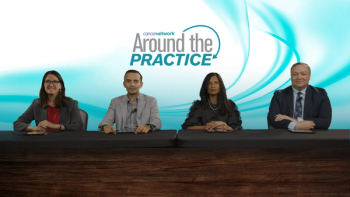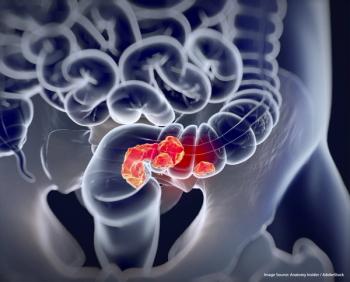
Overview of HER2+ Metastatic Colorectal Cancer
Expert oncologists discuss the landscape surrounding HER2+ metastatic CRC, including recommendations for biomarker testing and an overview of scoring criteria.
Episodes in this series

Transcript:
Cathy Eng, MD, FACP, FASCO: Dr Parikh, can you briefly describe the landscape surrounding HER2 [human epidermal growth factor receptor 2]–positive metastatic colorectal cancer?
Aparna Parikh, MD: It’s an exciting time for biomarkers in colon cancer. I have this slide I like to use a lot of a subset of subsets, and HER2 has stood out to be 1 of the most important subsets. When you hear of an incidence of 150,000 cases, though the HER2 prevalence is quite low, at 3% to 5%, that’s still a substantial number of patients. The features we see with HER2 disease include patients who tend to have more left-sided disease and more rectals.
This particular case was a distal sigmoid and maybe a high rectal cancer. It’s very consistent with pathophysiology and the expectation of what we would see with HER2 disease. We’re going to talk about this a little later, but we have many tools in our armamentarium to think about. In January 2023, we had another FDA approval for the subset of patients, which is exciting.
Cathy Eng, MD, FACP, FASCO: Do you want to mention very briefly your thoughts regarding anti-EGFR therapy when we’re considering HER2?
Aparna Parikh, MD: That’s a great question. Early preclinical data from Europe initially suggested that HER2 amplification may be a marker of anti-EGFR resistance, which is a negative predictive biomarker. For patients who are HER2 amplified, you wouldn’t want to necessarily think about starting with an anti-EGFR therapy.
Cathy Eng, MD, FACP, FASCO: Thank you. Dr Foote, briefly discuss your recommendations for generalized biomarker testing for a patient with newly diagnosed metastatic colorectal cancer. How do you incorporate this into your practice patterns?
Michael Foote, MD: For anyone with stage IV disease, we recommend comprehensive molecular profiling with 1 of the panels, either institutional or commercially available. At a minimum, there are a couple of actionable biomarkers we like to look for. Mismatch repair efficiency is important. A lot of patients will have their sample stained for IHC [immunohistochemistry], but evaluating it on a next-generation sequencing test can also be helpful. We have drugs for BRAF mutations, so we’re evaluating that. RAS is also an important thing to evaluate, specifically if a tumor is left-sided because we use EGFR inhibitors in RAS wild-type patients.
Finally, HER2 is a new biomarker that has just been FDA approved to indicate new therapy. That’s very appropriate, and every patient at this stage should be evaluated for HER2 therapy. We’ll talk a little later about which patients benefit, but we should look at ones that have left-sided tumors because 85% of patients with HER2 amplification have left-sided cancers.
Cathy Eng, MD, FACP, FASCO: Would you want to do testing early on when you meet a newly diagnosed patient, or would you wait?
Michael Foote, MD: I’d do it right away. Most of the panels evaluate HER2 therapies, so if you’re ordering 1, you’re probably going to end up getting the status. We’ll talk a little about how we evaluate HER2, but I’d get it right away.
Cathy Eng, MD, FACP, FASCO: Dr Dasari, can you discuss testing methods and scoring criteria when assessing HER2 status?
Arvind Dasari, MD, MS: HER2 as a biomarker was initially developed in breast cancer and later in gastric cancer. What we’re looking for is overexpression of the protein that’s done by immunohistochemistry, and that’s been the traditional way of evaluating it. Looking at genomic amplification, that could be done by in situ hybridization or more recently next-generation sequencing. The traditional criteria looked at IHC and the intensity of staining. Tumors that had 3+ intensity were positive, 0 or 1 was negative, and 2+ were equivocal and required additional investigation with in situ hybridization.
With gastric cancer and breast cancer, the proportion of cells that needed to be positive was lower, around 10%. This is compared with the HERACLES trial, which initially evaluated anti-HER2 therapy in colorectal cancer and needed 50% or higher of the cells to be called positive with IHC. The bottom line is that a variety of approaches are available. In practice, slowly we’re moving from IHC and ISH to next-generation sequencing.
Cathy Eng, MD, FACP, FASCO: Thank you.
Transcript edited for clarity.
Newsletter
Stay up to date on recent advances in the multidisciplinary approach to cancer.
























































































